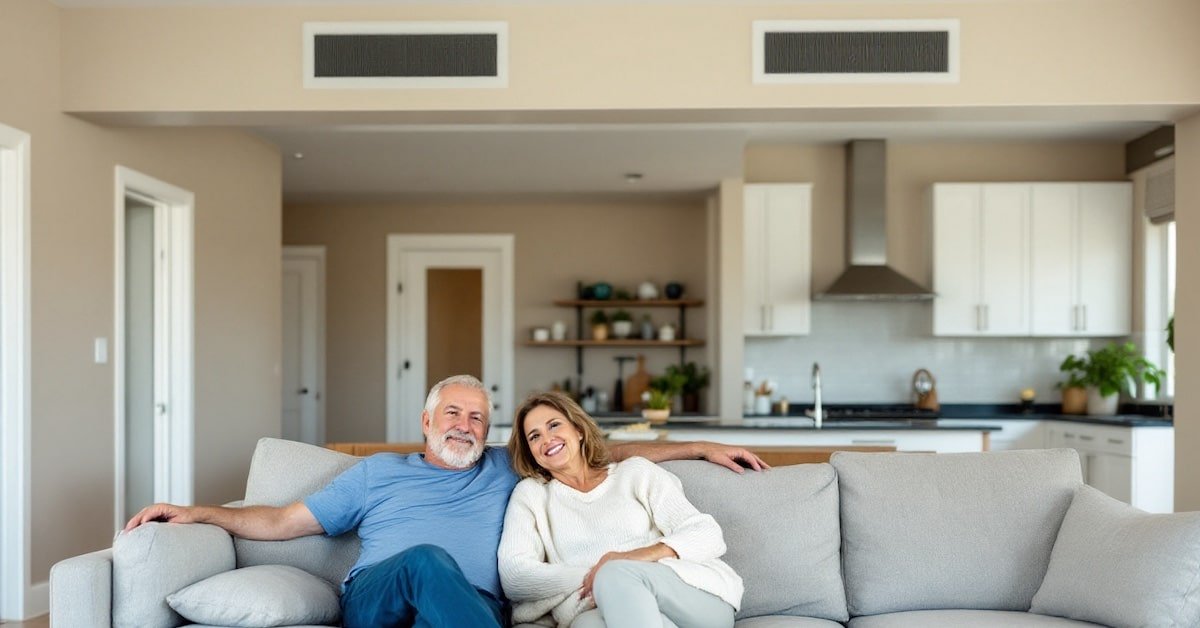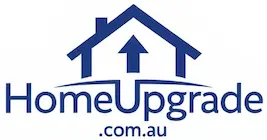Thinking about upgrading your home comfort? If you’re dreaming of whole-house cooling in summer and cosy warmth in winter, ducted reverse cycle air conditioning might be on your radar. It’s a fantastic solution for many Aussie homes, but the big question always looms: what’s it going to cost?

Let’s be honest, it’s a significant investment, so understanding the price tag is crucial. Forget the guesswork! We’ve dived deep into what influences the cost of installing ducted reverse cycle air conditioning right here in Australia to give you a clear picture.
So, What Exactly is Ducted Reverse Cycle Air Conditioning?
Before we talk dollars, let’s quickly recap. Unlike those single-room split systems, a ducted system uses a central unit (usually hidden away in your roof space or outside) connected to a network of ducts. These ducts run through your ceiling or under the floor, delivering conditioned air (cool or warm, thanks to the ‘reverse cycle’ magic) to multiple rooms via discreet vents or outlets. You control it all from a central thermostat, often with the ability to set different ‘zones’ for different parts of your house. Think total climate control, seamlessly integrated.
Why Choose Ducted Air Con? The Perks Explained
Why are so many Aussies opting for ducted systems?
- Whole-Home Comfort: Enjoy consistent temperatures throughout your house, banishing hot or cold spots.
- Aesthetics: No bulky units hanging on your walls! Only subtle vents are visible, keeping your interiors looking schmick.
- Quiet Operation: The main noisy components are typically located outside or in the roof cavity, making it quieter inside than many split systems.
- Heating & Cooling: Reverse cycle means you get year-round comfort from a single system – efficient cooling for scorching summers and toasty heating for chilly winters.
- Zoning Control: Save energy (and money!) by only heating or cooling the rooms you’re actually using.
- Adds Value: A quality ducted system can be a real selling point, potentially increasing your home’s resale value.
The Big Question: How Much Does Ducted Reverse Cycle Air Conditioning Cost to Install?
Alright, let’s get down to brass tacks. Pinning down an exact figure is tricky because every home and installation is unique. However, we can give you some solid ballpark figures and break down the factors that swing the price.
Ballpark Figures: Costs by Home Size (Supply & Install)
These are estimates only for a standard installation in 2025. Prices vary significantly based on the factors below.
| Home Size | Typical System Size | Estimated Cost Range (AUD) |
|---|---|---|
| Small Home/Apartment | 6-10 kW | $7,000 – $11,000+ |
| Medium Home (3-4 Bed) | 10-16 kW | $10,000 – $15,000+ |
| Large Home (4+ Bed) | 14-25+ kW | $13,000 – $20,000+ |
| Extra Large/Complex | Custom | $18,000 upwards |
Important: Always get multiple detailed quotes specific to your home!
What Pushes the Price Up (or Down)? Key Cost Factors
Think of these as the ingredients that make up your final quote:
- System Size & Brand: Bigger homes need more powerful (and more expensive) units (measured in kilowatts, kW). Well-known brands like Daikin, Mitsubishi Electric, Fujitsu, Panasonic, ActronAir, etc., often come with different price points reflecting features, efficiency, and warranties.
- Number of Zones & Outlets: The more zones you want to control independently, and the more rooms needing vents (outlets), the more complex (and costly) the ductwork, zoning components, and installation become.
- Your Home’s Layout: Is it a single-storey or double-storey? Is there easy access to the roof space or underfloor area? Older homes or those with tricky roof lines might require more labour. The type of construction (brick veneer, double brick, timber frame) can also play a role.
- Installation Complexity & Labour: This is a big one. It covers the time and skill needed to install the indoor/outdoor units, run the ductwork, install vents, connect electrical wiring, and commission the system. More complex jobs naturally cost more in labour.
- Location (Yep, it matters!): Prices can vary between states and even between metro and regional areas due to differences in labour rates, transport costs, and local regulations.
Beyond Installation: What About Running Costs?
The initial outlay isn’t the only cost. You need to factor in electricity usage. The good news is modern ducted reverse cycle systems are surprisingly energy efficient, especially compared to older heating/cooling methods. Here’s how to keep running costs in check:
- Energy Efficiency Ratings: Look for systems with higher star ratings for both cooling and heating. The Zoned Energy Rating Label (ZERL) gives a more tailored efficiency rating based on climate zones in Australia. Higher efficiency means lower power bills.
- Zoning: Use it wisely! Don’t heat or cool empty rooms. Closing off zones you aren’t using makes a massive difference.
- Smart Thermostats & Timers: Program your system to turn on/off when needed, or adjust temperatures automatically. Many modern systems have Wi-Fi control via apps.
- Insulation: Good ceiling, wall, and floor insulation is key! It stops conditioned air from escaping and prevents outside temperatures from getting in, reducing the workload on your air con.
- Regular Maintenance: Get your system serviced annually to keep it running efficiently and catch any potential issues early.
Choosing the Right System for Your Aussie Home
Selecting the perfect system involves more than just picking a brand.
- Get the Size Right: Too small, and it’ll struggle (and cost a fortune to run). Too big, and it might cycle on/off too frequently and not dehumidify properly. A qualified installer will perform a heat load calculation for your home.
- Consider Brands: Research different brands available in Australia. Look at efficiency, features (like Wi-Fi control, advanced filtration), warranty periods, and local support/service availability. CHOICE often has independent reviews worth checking.
- Getting Accurate Quotes: The Golden Rule: Don’t rely on online calculators or ballpark figures alone. Get at least 3 detailed, written quotes from licensed and reputable HVAC installers. They should visit your home to assess it properly before quoting. Ensure the quote clearly itemises the brand/model, components, zones, labour, warranty, and any exclusions.
Frequently Asked Questions (FAQs)
Is ducted reverse cycle worth the investment?
For many homeowners seeking whole-home, year-round comfort, aesthetics, and potential added property value, the answer is often yes. Weigh the upfront cost against the long-term benefits and running costs compared to other options.
How long does installation take?
For a standard single-storey home, installation typically takes 1-3 days. Double-storey or more complex installations might take longer.
Can I install it myself?
Absolutely not! Air conditioning installation involves refrigerant handling and electrical work, which legally requires licensed technicians in Australia. DIY attempts are dangerous, void warranties, and won’t comply with regulations.
Ready to Get Comfortable? Next Steps
Feeling more informed about the costs? The best way forward is to:
- Assess Your Needs: How many rooms/zones do you need? What’s your budget?
- Research Installers: Look for local, licensed, and well-reviewed air conditioning specialists.
- Get In-Home Quotes: Arrange for those crucial site inspections and detailed quotes.
- Compare Carefully: Don’t just look at the price; compare the proposed system, warranty, inclusions, and the installer’s reputation.
Investing in ducted reverse cycle air conditioning is a big decision, but with the right information and a quality installation, you’ll be enjoying perfect temperatures all year round. Good luck!
Disclaimer: This article provides general information and estimates. Costs can vary significantly. Always obtain personalised quotes from qualified professionals for your specific situation.
